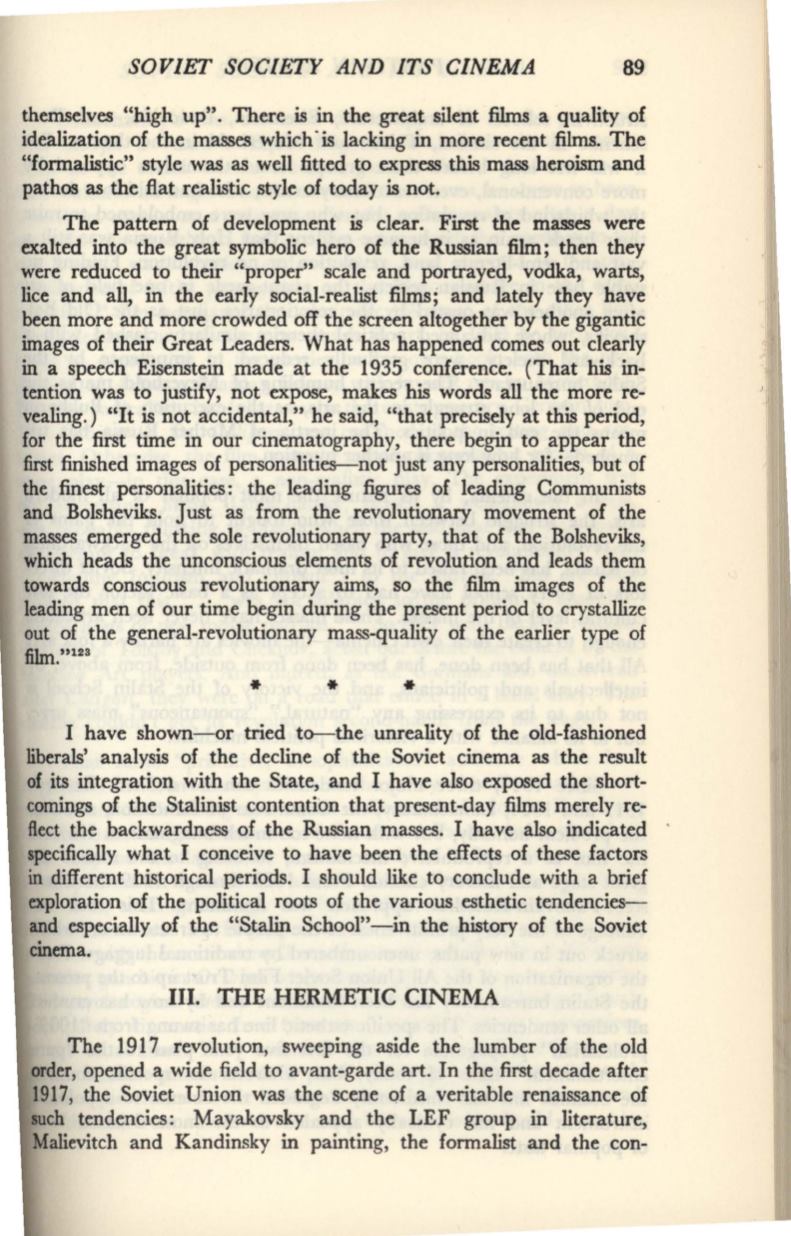
SOVIET SOCIETY AND ITS CINEMA
89
themselves "high up". There is in the great silent
films
a quality of
idealization of the masses which· is lacking in more recent films. The
"formalistic" style was as well fitted to express this mass heroism and
pathos as the flat realistic style of today is not.
The pattern of development is clear. First the masses were
exalted into the great symbolic hero of the Russian film; then they
were reduced to their "proper" scale and portrayed, vodka, warts,
lice and all, in the early social-realist
films;
and lately they have
been more and more crowded off the screen altogether by the gigantic
images of their Great Leaders. What has happened comes out clearly
in
a speech Eisenstein made at the 1935 conference. (That his in–
tention was to justify, not expose, makes his words all the more re–
vealing.) "It is not accidental," he said, "that precisely at this period,
for the first time in our cinematography, there begin to appear the
first finished images of personalities--not just any personalities, but of
the finest personalities: the leading figures of leading Communists
and Bolsheviks. Just as from the revolutionary movement of the
masses emerged the sole revolutionary party, that of the Bolsheviks,
which heads the unconscious elements of revolution and leads them
towards conscious revolutionary aims, so the film images of the
leading men of our time begin during the present period to crystallize
out of the general-revolutionary mass-quality of the earlier type of
film."123
*
*
*
I have shown-or tried to-the unreality of the old-fashioned
liberals' analysis of the decline of the Soviet cinema as the result
of
its integration with the State, and I have also exposed the short–
comings of the Stalinist contention that present-day films merely re–
flect the backwardness of the Russian masses. I have also indicated
specifically what I conceive to have been the effects of these factors
in
different historical periods. I should like to conclude with a brief
exploration of the political roots of the various esthetic tendencies–
and especially of the "Stalin School"-in the history of the Soviet
cinema.
III. THE HERMETIC CINEMA
The 1917 revolution, sweeping aside the lumber of the old
Cll'der, opened a wide field to avant-garde art. In the first decade after
1917, the Soviet Union was the scene of a veritable renaissance of
ch
tendencies: Mayakovsky and the LEF group in literature,
alievitch and Kandinsky in painting, the formalist and the con-


